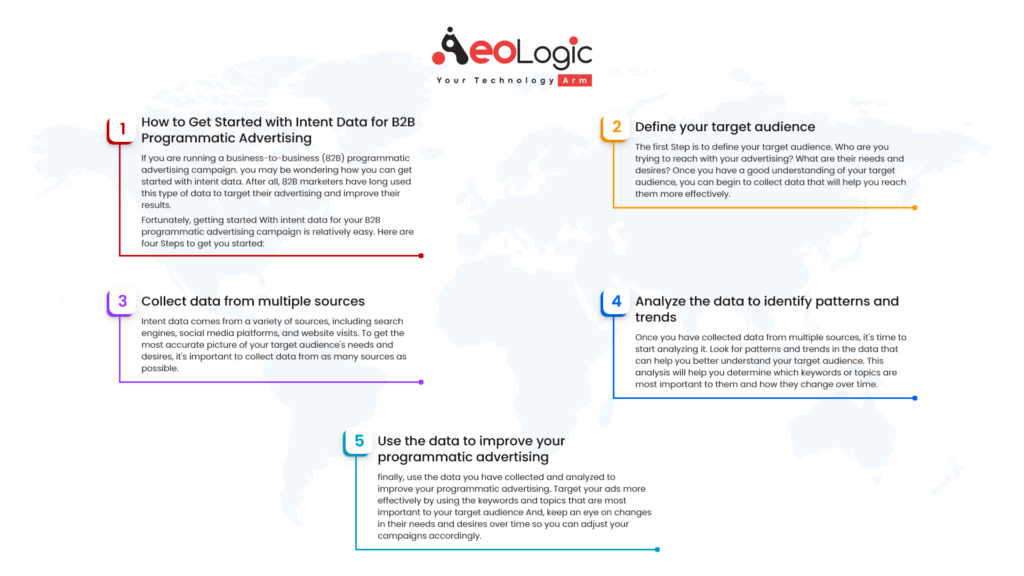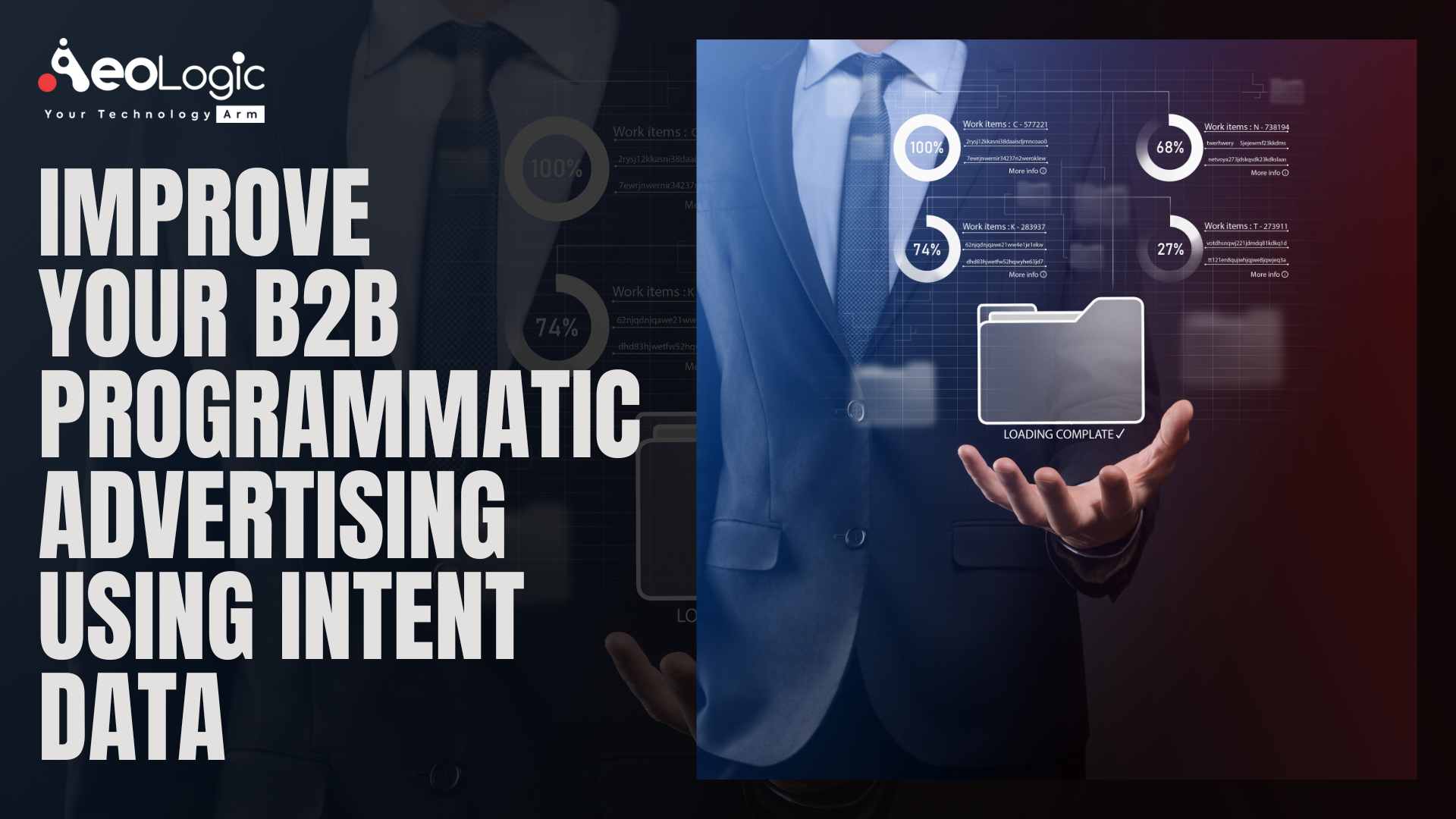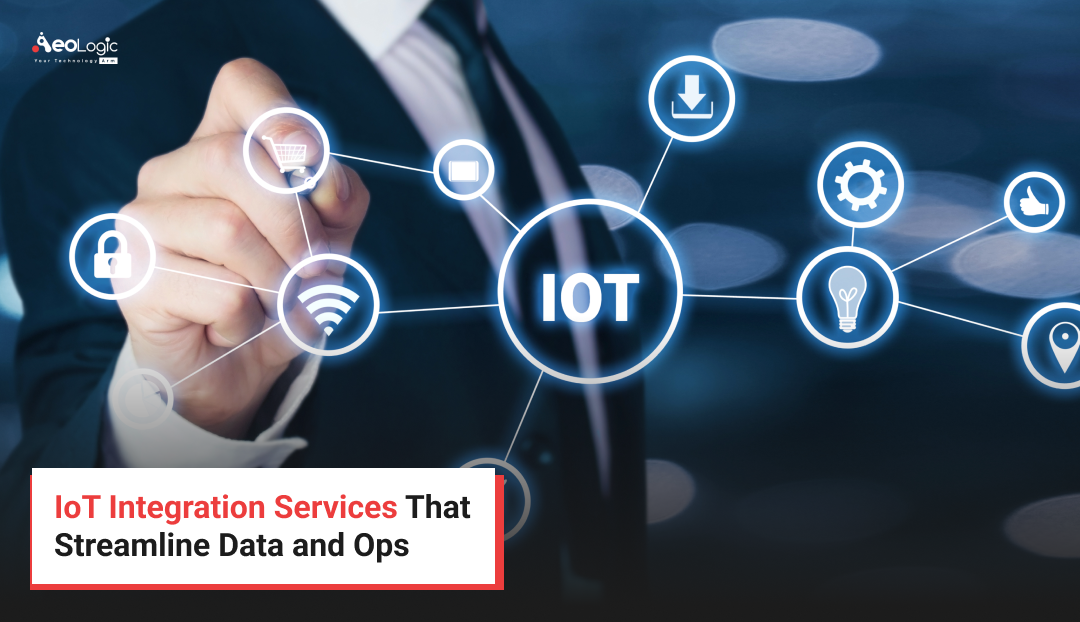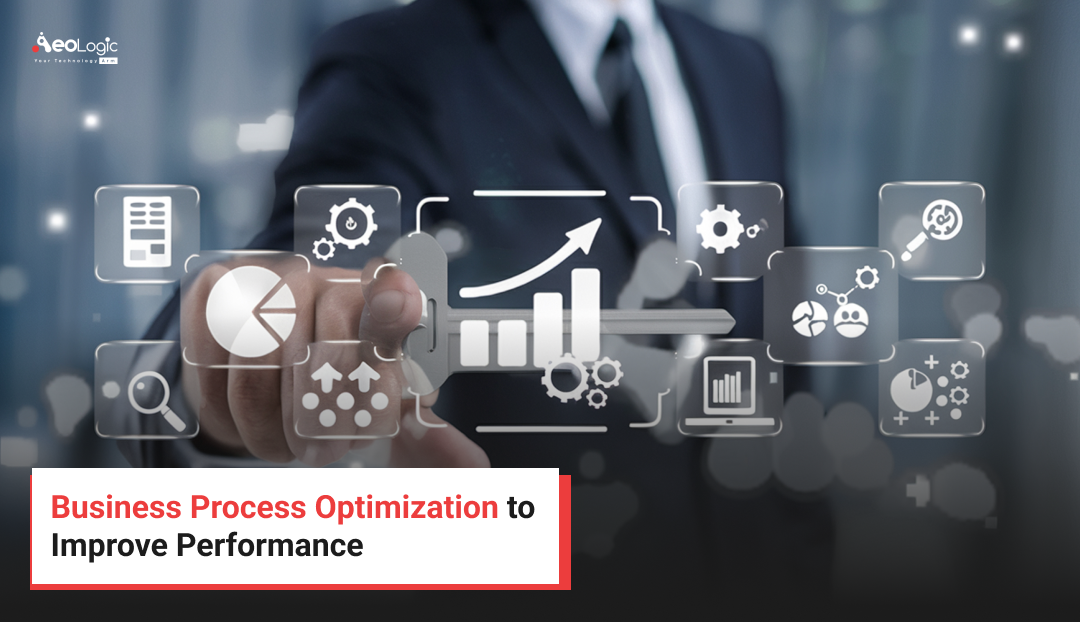You’re a B2B marketer who uses programmatic advertising. You’ve been in the game for a while, and you’re pretty good at it. But there’s always room for improvement, right?
One way you can improve your programmatic advertising is by using intent data. Intent data is information that tells you what your target audience is interested in. There are a few different ways to get intent data. You can buy it from a data provider, or you can collect it yourself. Once you have it, you can use it to improve your targeting and make your ads more relevant to your audience. In this blog post, we’ll show you how to use intent data to improve your B2B programmatic advertising.
Let’s begin!
Table of contents
- What is B2B Programmatic Advertising?
- What is Intent Data?
- How can Intent Data Improve Your B2B Programmatic Advertising?
- What are the Benefits of Using Intent Data for B2B Programmatic Advertising?
- How to Get Started with Intent Data for B2B Programmatic Advertising
- How to Use Intent Data to Achieve Your Sales Goals
- Conclusion
What is B2B Programmatic Advertising?
B2B programmatic advertising is the process of using automation to buy and place ads across the internet. This type of advertising allows businesses to target their audience more effectively and efficiently than traditional methods, such as print or television ads.
Programmatic advertising is made possible by technology that tracks user behavior across the web and uses that data to place ads in front of them that are relevant to their interests. This process is also known as “programmatic buying” or “ad targeting.”
The use of programmatic advertising has grown rapidly in recent years, as businesses have become more aware of its potential and more comfortable with using automation for ad placement.
In 2018, programmatic ad spending was estimated to be $33 billion in the United States alone, and it is expected to grow to over $50 billion by 2020.
What is Intent Data?
Intent data is information that can be gleaned from a user’s online behavior that indicates what they are interested in. This data can be used to target them with ads that are more relevant to their interests, which can lead to better conversions.
There are a few different sources of intent data, including:
-Search engine keywords -Website visits -Social media interactions -Content downloads
This data can be collected by tracking cookies, pixel tags, and other tracking methods. Once it is collected, it can be analyzed to get insights into what users are interested in.
This information can then be used to inform your programmatic advertising campaigns. By targeting users with ads based on their interests, you can improve the performance of your campaigns and get better results.
Also Read: How Mobile Technology Has Modernized the Construction Industry
How can Intent Data Improve Your B2B Programmatic Advertising?
As the world of marketing continues to evolve, so too must the strategies and tactics that are used to reach and engage potential customers. One area that has seen a significant change in recent years is programmatic advertising.
Programmatic advertising refers to the use of software to automate the buying and placement of online ads. This type of advertising has become increasingly popular due to its ability to target specific audiences with laser-like precision.
One way that programmatic advertising can be made even more effective is by using intent data. Intent data is information that is collected about an individual’s online activity that indicates their level of interest in a particular product or service.
By incorporating intent data into your programmatic ad campaigns, you can more accurately target potential customers who are likely to be interested in what you have to offer. This will help to improve your click-through rates and conversion rates, and ultimately lead to more sales and revenue for your business.
What are the Benefits of Using Intent Data for B2B Programmatic Advertising?
There are many benefits of using intent data for B2B programmatic advertising. By understanding what your target audience is searching for online, you can reach them with targeted ads at the right time. This can result in higher conversion rates and more efficient marketing spending. Additionally, intent data can help you to better understand your customer journey, allowing you to optimize your campaigns accordingly.
Benefits of using Programmatic Advertising for B2B
There are many benefits of using programmatic advertising for businesses, including:
Increased Efficiency: Programmatic buying allows businesses to automate the process of placing ads, which can save time and money.
Improved Targeting: By collecting data on user behavior, businesses can better target their audience with relevant ads. This helps ensure that your ad budget is being spent on ads that are likely to reach your target customers.
Greater Transparency: With programmatic buying, businesses have access to detailed reports on where their ads are being placed and how they are performing. This level of transparency is not available with traditional advertising methods.
How to Get Started with Intent Data for B2B Programmatic Advertising
If you’re running a business-to-business (B2B) programmatic advertising campaign, you may be wondering how you can get started with intent data. After all, B2B marketers have long used this type of data to target their advertising and improve their results.
Fortunately, getting started with intent data for your B2B programmatic advertising campaign is relatively easy. Here are 4 steps to get you started:

1. Define your target audience
The first step is to define your target audience. Who are you trying to reach with your advertising? What are their needs and desires? Once you have a good understanding of your target audience, you can begin to collect data that will help you reach them more effectively.
2. Collect data from multiple sources
Intent data comes from a variety of sources, including search engines, social media platforms, and website visits. To get the most accurate picture of your target audience’s needs and desires, it’s important to collect data from as many sources as possible.
3. Analyze the data to identify patterns and trends
Once you have collected data from multiple sources, it’s time to start analyzing it. Look for patterns and trends in the data that can help you better understand your target audience. This analysis will help you determine which keywords or topics are most important to them and how they change over time.
4. Use the data to improve your programmatic advertising
Finally, use the data you’ve collected and analyzed to improve your programmatic advertising. Target your ads more effectively by using the keywords and topics that are most important to your target audience. And, keep an eye on changes in their needs and desires over time so you can adjust your campaigns accordingly.
Following these four steps will help you get started with intent data for your B2B programmatic advertising campaign. By collecting and analyzing data from multiple sources, you can gain a better understanding of your target audience and use that information to improve your results.
How to Use Intent Data to Achieve Your Sales Goals
Sales goals can be achieved by using customer intent data to inform your BB programmatic advertising. By understanding what your customers are searching for online, you can create targeted ads that speak to their needs and interests. This will result in more qualified leads and higher conversion rates.
In order to get started, you’ll need to identify the right sources of intent data. Look for providers that offer data on web searches, social media interactions, and purchase behaviors. Once you have this data, you can start creating more relevant and effective ads.
Keep in mind that customer intent can change over time, so it’s important to regularly monitor and update your targeting. By using intent data, you can stay ahead of the competition and ensure that your advertising is always on point.
Also Read: The Importance Of A Big Data Strategy For Business Growth!
Conclusion
As intent data becomes more and more readily available, it’s important to understand how to use it in order to improve your B2B programmatic advertising. By targeting ads based on user behavior, you can make sure that your ads are being seen by the people who are most likely to be interested in them. As a result, you’ll see higher click-through rates and better conversion rates.
If you’re not already using intent data in your programmatic advertising, now is the time to start.
Feel free to schedule a free 60-minute consultation with one of our experts. We’ll talk about the opportunities and address any concerns you may have. Our consultants will suggest solutions and outline how they can be implemented. Let’s talk!
Related Blogs:
- How AI/ML Can Change the Public Transportation Industry
- Transforming Business With Digital Technology in the Oil Palm Industry in India
- Importance of Digital Asset Management in the Retail Industry
- How AI is Transforming the Agriculture Industry
- 10 Ways to Use Artificial Intelligence to Improve Business Processes
- The Future of IoT Technology in Convenience Stores
- Building Manufacturing Resilience Through AI and ML

I’m Deepika Pandey, an SEO strategist and content writer with 6+ years of experience. I create SEO-friendly content that drives traffic and engages readers. I combine data insights with creativity to help businesses grow their online presence effectively.






